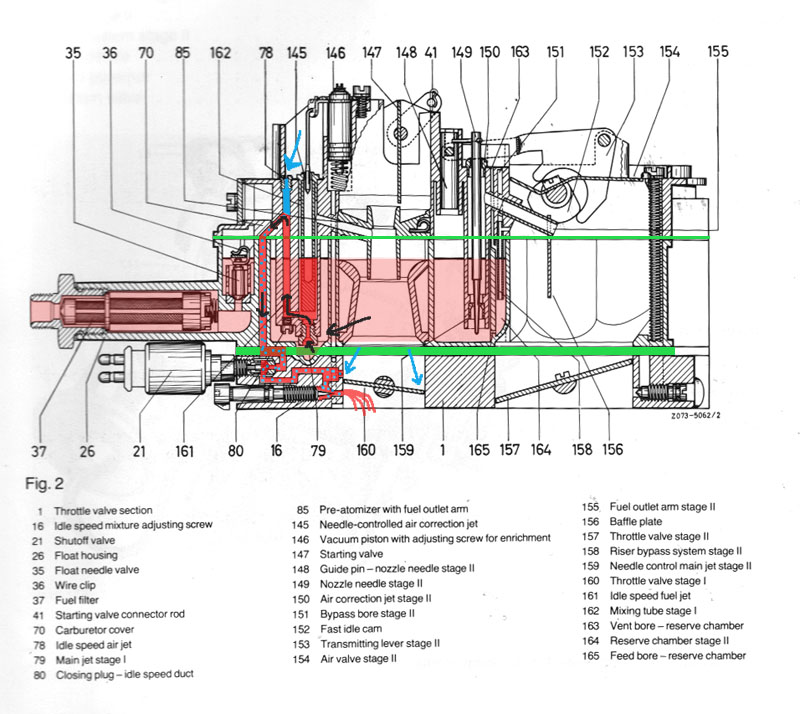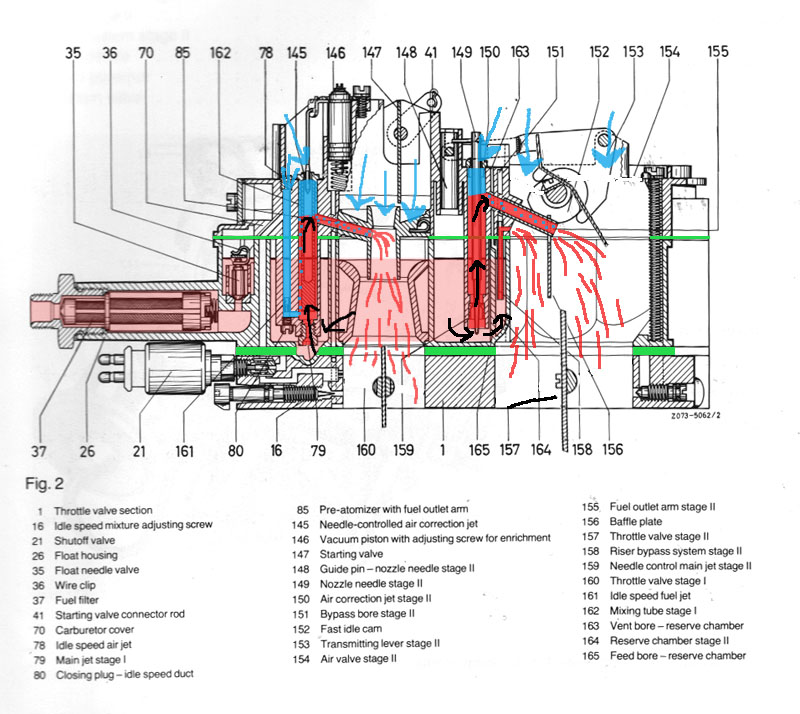 |
| Home |
Solex 4a1 carburetor - operation of idle, main and secondary stage
At idle, the fuel enters the fuel bowl through a filter (37) and a float valve (35). At idle the throttle plates (160) are closed and very little air enters through the carb throats. The fuel (really, mixture of fuel and air bubbles) is sucked through tiny orifice below throttle plate into the engine. The amount of that fuel is controlled through the mixture screw (16) AND ease of that fuel being sucked in (fuel level in the bowl). If you were to follow the fuel's trek, the fuel is sucked through the main jet (79) at the bottom of the bowl then bypasses main mixing tube (162) entering idle mixing duck. In there, the fuel is mixed with air that enters through idle air jet (78). From this point the fuel is emulsified. It then travels through fuel shut off valve (21), past transition holes, idle mixture screw and into main intake throats. Notice the gaskets (in green) through which the fuel has to travel. If the carb is warped, it develops internal leaks where the fuel and air is exposed to other forces thud impeding its smooth travel.
If you were to press on the gas now, the throttle plates open and the suction (vacuum) of the engine that pulled the fuel mixture though idle opening would disappear at that orfice. There would be no suction anymore to pull the fuel through the idle passages but the suction force would start pulling fuel through other orifice. If you were to follow path of fuel at this stage, fuel is sucked in from fuel bowl through the main jet (79) at the bottom of the bowl and enters main mixing tube. In there it encounters preatomizer (85) that mixes fuel with air entering through main air correction jet (145) - the piston rod of enrichment (146) moves up due to spring not held by the decreasing vacuum, letting in some air. From this point the fuel is emulsified and is discharged into the carb's throat. Notice that here the fuel path is much simpler than at idle (the main mixing tubes are simply dipped into the bowl - they don't pass any gaskets) so any air leaks are much less obvious or destructive to driving experience.
As you press on the gas further, mechanical linkage opens up throttles of the secondaries (157). Increasing vaccum produced in the secondaries barrels pulls fuel from secondary transition holes. Here the fuel is pulled from reserve chamber, through the secondaries tubes (158).
As the engine demands increase, the vacuum canister holding the secondaries air flap (154) lets go due to decreasing vacuum. The tension on the spring is overcome by the vaccum in secondaries barrels and the flaps ar pulled open. As the flaps pull open, transmiting level (153) is lifted by mechanical action of the cam (152 - mistakenly labeled "fast idle" in the diagram) - this lifts secondaries needles letting more fuel be pulled through secondaries fuel outlet (155) at the same time letting in more air through the needle orfice creating emulsion.
|
| copyright 2019 by Patryk Rebisz |



